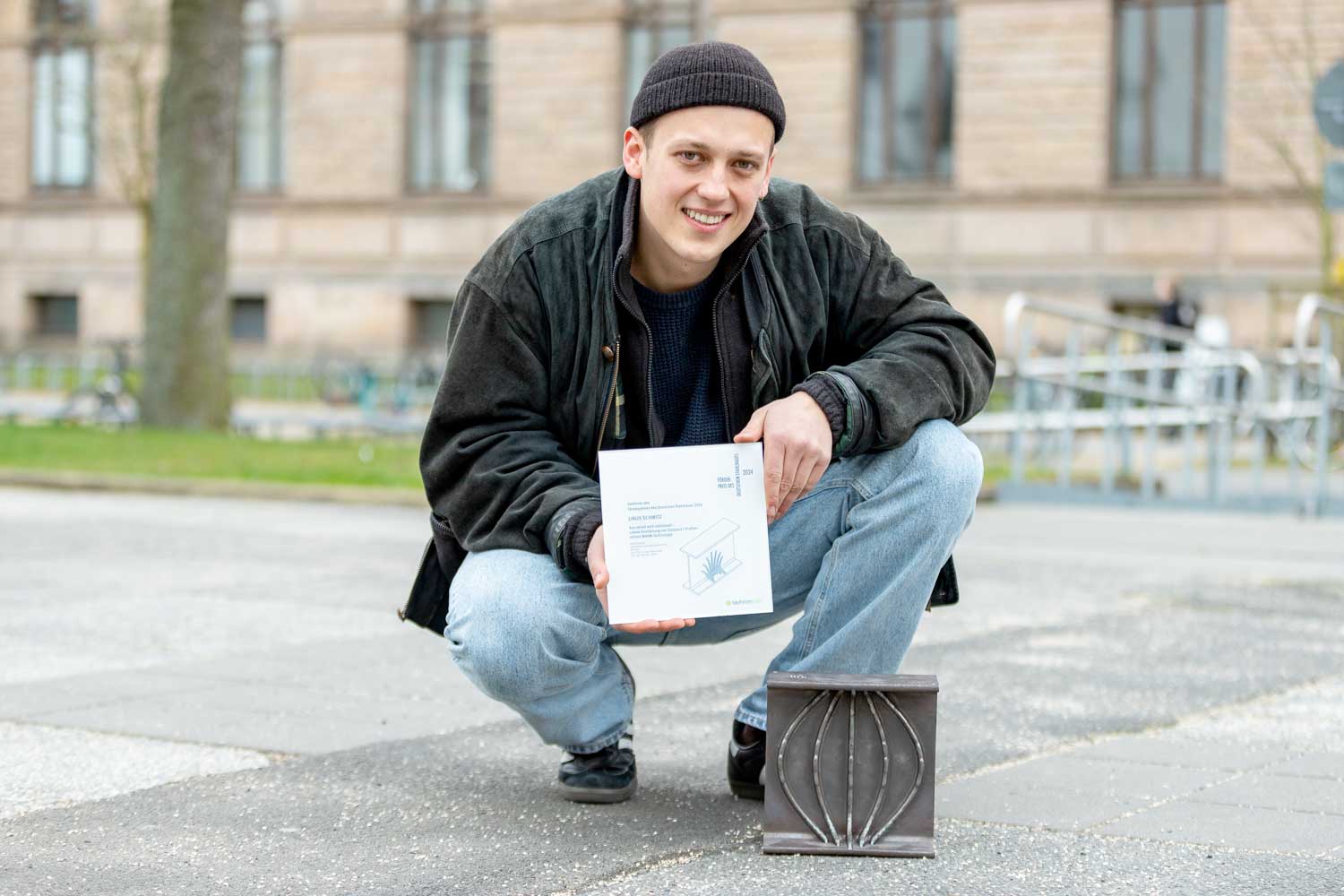How can steel beams that are exposed to particular loads be individually reinforced? Linus Schmitz researched this in a student research project at the Institute of Structural Design (ITE) at TU Braunschweig: using a 3D printing process, he applied metal specifically to the areas of steel profiles where the stresses are greatest. This enables slimmer profiles, thus saving resources and also reducing CO2 emissions in steel construction. The civil engineering graduate has now been awarded the German Steel Construction Award for his research work.
The WAAM process makes it possible to produce complex, freely shaped elements step by step by applying metal in points or lines. In contrast to standardized series components, this technique allows components to be precisely adapted to local loads. Schmitz was able to produce five demonstrators at the ITE using a robot-controlled WAAM system, demonstrating the efficiency and accuracy of the process.
“The fact that I was able to make a serious research contribution with my work here naturally makes me very happy,” says the civil engineer. “I want to investigate the interface between civil engineering and architecture and close the gap between design, materials and manufacturing processes.”
This research work, which is part of the Collaborative Research Center TRR 277 “Additive Manufacturing in Construction” (AMC) of TU Braunschweig and TU Munich, demonstrates the potential of combining serial production and local reinforcement using WAAM. The work paves the way for the retrofitting and reinforcement of existing steel structures and thus makes an important contribution to circular construction. In the second funding period of the TRR 277 AMC, research will be carried out specifically on this topic using mobile robots.
The jury of the German Steel Construction Award praised the possibility of individually reinforcing standardized profile rows, which offers new possibilities for detailed design. This strategy of sustainability, in which ecology, economy, engineering and design are harmonized, is seen as highly welcome.
Schmitz’s commitment to greener construction and his research results have already been presented at Eurosteel 2023 in Amsterdam. Following his successful work on this project, Schmitz plans to continue his research at the interface between civil engineering and architecture, with a focus on earth-based building materials in a project at ETH Zurich.
Subscribe to our Newsletter
3DPresso is a weekly newsletter that links to the most exciting global stories from the 3D printing and additive manufacturing industry.





















